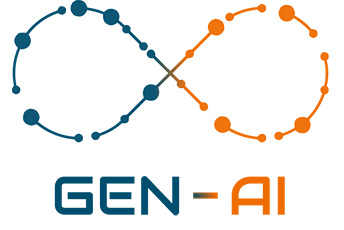Philanthropy and NGOs (Project Selection for Funds or Grants)
Introduction
The API /virtualbot/best_option/ is a tool specifically designed to evaluate projects in philanthropy and NGOs that request funding, grants, or subsidies. This API receives data in JSON format and attachments containing details of the projects to be analyzed. It prioritizes projects with the greatest social impact and the strongest execution plans, optimizing the use of available resources. It is key for foundations, NGOs, and governments looking to maximize the value of their investments in social and development initiatives.
Common Use Cases:
- Project Evaluation for Funding from NGOs or Government:
The API `/virtualbot/best_option/` can analyze projects submitted in JSON and attachments, evaluating factors such as social impact, project scope, beneficiary population, and expected outcomes. This allows for the identification of projects that will generate the greatest benefits for the community.
Application: Selection of projects with high social impact, optimizing fund allocation.
Example Request:
{
"user": "foundation@philanthropy.org",
"type": "project_funds",
"prompt": "From all submitted projects, determine which has the greatest social impact on improving community health."
}
- Selection of Programs with Greater Social Impact and Viability:
The API evaluates the feasibility of implementation and the social impact of the projects received, based on execution plans and available resources, including attachments. It helps select projects with high feasibility and significant social impact.
Application: Selection of programs with a realistic execution plan that can generate a positive and sustainable impact.
Example Request:
{
"user": "ngo@development.org",
"type": "project_funds",
"prompt": "From all submitted projects, determine which has the greatest social impact and viability in rural communities."
}
- Comparison of Proposals for Fund or Grant Allocation:
The API `/virtualbot/best_option/` allows for the comparison of project proposals submitted in JSON and files to determine which deserve a higher allocation of funds, based on criteria such as social impact, scalability, and sustainability.
Application: Comparison of proposals to allocate funding to projects with the greatest potential for success.
Example Request:
{
"user": "funds@grants.org",
"type": "project_funds",
"prompt": "From all submitted projects, determine which should receive the highest allocation of funds based on its social impact and long-term viability."
}
Specific Functions of the API for Philanthropy and NGOs:
- Social Impact Assessment:
The API analyzes and compares the social impact of various projects using data from attachments and JSON, measuring the ability to improve quality of life or reduce inequalities in areas such as education, health, and sustainable development.
Application: Selection of projects that have the potential to significantly change the lives of beneficiaries.
- Feasibility and Execution Analysis:
The API evaluates the feasibility of projects based on the execution plans detailed in the received files, considering resources and risks.
Application: Identification of projects with solid plans that maximize impact without compromising resources.
- Cost-Benefit Analysis of Social Benefits:
The API performs a cost-benefit analysis of projects, based on requested resources and projected social benefits.
Application: Prioritization of projects that offer the greatest social benefit per unit of funding.
- Risk Detection and Implementation Challenges:
The API identifies potential risks related to project implementation, allowing for the anticipation and mitigation of challenges before execution.
Application: Risk assessment in infrastructure projects or community development programs.
- Efficient Allocation of Funds and Grants:
The API optimally allocates available funds, prioritizing projects with the greatest social impact and viability.
Application: Prioritization of projects based on their social impact and execution capacity.
Expanded Examples of Requests to the API:
– Social Impact Assessment in Educational Projects:
An NGO in the education sector wishes to select projects that improve access to education in rural communities.
JSON Request:
{
"user": "education@ngo.org",
"type": "project_funds",
"prompt": "From all submitted projects, determine which has the greatest social impact and the best execution plan in the education sector in rural communities."
}
– Comparison of Community Health Projects:
A philanthropic fund wishes to compare proposals to select those with the greatest social impact.
JSON Request:
{
"user": "health@philanthropy.org",
"type": "project_funds",
"prompt": "From all submitted community health projects, determine which should receive the highest allocation of funds based on its impact and viability."
}
Real Applications in Philanthropy and NGOs:
– Selection of Educational Projects:
The API helps NGOs identify high-impact educational projects.
– Comparison of Community Health Projects:
It facilitates the selection of health projects in underserved areas.
– Evaluation of Sustainable Development Programs:
NGOs can use the API to select environmental sustainability projects.
– Optimization of Fund Allocation for Social Projects:
The API ensures that funds are allocated to projects with high social and economic impact.
Advantages of Using the API in Philanthropy and NGOs:
– Automation of Project Evaluation:
Analyzes large volumes of proposals quickly.
– Priority on Social Impact:
Selects projects with the greatest impact in key areas.
– Resource Optimization:
Facilitates the efficient distribution of funds.
– Risk Mitigation:
Anticipates problems in project implementation.
– Long-Term Sustainability:
Helps identify sustainable projects.
Summary:
The API `/virtualbot/best_option/` receives files and data in JSON format to automate the evaluation and selection of projects in philanthropy and NGOs. It helps NGOs and foundations optimize fund allocation by prioritizing projects with the greatest social impact, viability, and long-term sustainability.


